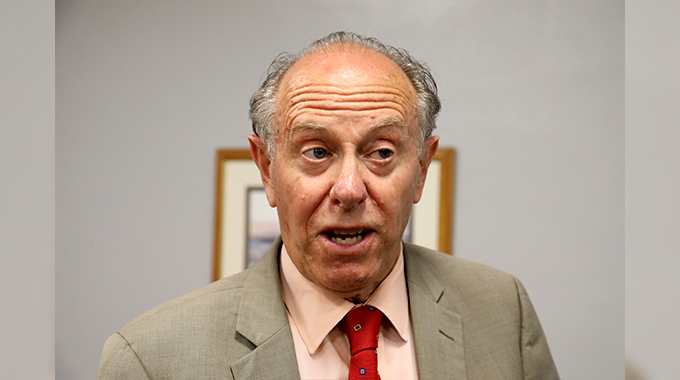COMMENT: New forex retention ratio for gold miners should spur them on

The gold mining industry got what it had been calling for when on Tuesday, the Government increased the foreign currency portion the miners retain after selling the metal to Fidelity Printers and Refiners (FPR).
Gold is the country’s top foreign currency earner but for years the hard currency earnings had not been cascading in satisfactory amounts down to those who really generate it. They had been complaining that much of the equipment they need to produce optimally is imported, thus has to be paid for in foreign currency which they didn’t have. It indeed was ironic that having worked so hard to produce the country’s biggest foreign currency earner, the miners didn’t have the foreign currency themselves. They had to queue for long periods for the cash at the Reserve Bank like everyone else, including those that don’t generate any hard currency. Often, the gold miners failed to get it. Their businesses suffered as a result.
But their sustained lobby bore fruit on Tuesday.
FPR increased the retention threshold to 70 percent in foreign currency for sale proceeds, a significant jump from 55 percent. So the miners will now receive 30 percent of their gold sale proceeds to FPR in local currency. Small-scale and artisanal miners will be paid a flat rate of US$45 per gramme.
By coming up with the new gold trading framework, the Government is trying to boost production in the sector, enhance the viability of miners and reduce illegal trade in the mineral.
The industry welcomed the policy shift with much delight.
“Please accept our sincere gratitude to RBZ through FPR having increased the gold retention threshold from 55 percent/45 percent to 70 percent/30 percent (US$ and RTGS respectively),” said Zimbabwe Miners’ Federation (ZMF) chief executive officer Mr Wellington Takavarasha.
ZMF represents the smaller producers who consistently and in their massive numbers, produce the bulk of the gold. They accounted for 22 of the 34 tonnes of gold produced in 2018, representing a 64,7 percent contribution.
Large mines must be equally happy.
We join both in celebrating the new trading framework. The sector is the goose that lays the golden egg. That goose must be treated differently. It deserves that special treatment.
On average, gold earns the economy US$1 billion yearly in export revenue. The 34 tonnes mined in 2018 generated US$1,33 billion in exports. Because of a number of reasons, output dropped to 27 tonnes last year, earning the country US$946 million. The Government has set a target of 35 tonnes this year. The Covid-19 pandemic could make it a little difficult for the industry to meet that target but we also realise that gold miners were among the first to be allowed to operate despite the lockdown. Whether that forecast will be achieved or not will, of course, depend also on how the disease progresses over the next six months.
However, even if Covid-19 bears on production, the new foreign currency retention ratio should incentivise miners to produce more of the metal this year, making up for any losses.
We hope that more foreign currency in the pocket for miners would encourage more of them to deliver gold to FPR instead of smuggling it to South Africa. It has always been alleged that a lot of locally produced gold is smuggled down south by producers and or their agents who would be in search of foreign currency. Actually, a good number of them have been arrested after being caught with gold attempting to take it to South Africa. Now if a local gold miner can sell his or her gold to FPR and earn so much in foreign currency, they are unlikely to take the big risk of smuggling it for sale abroad. Such a situation would be good for the miner as it is for the economy.
Yet another hope of ours is that miners would use the increased amounts of foreign currency they would earn productively. They must use it to secure more modern equipment for them to mechanise their mines.
Having been paid so much money in a currency that is so stable, we don’t expect gold miners to continue operating from nondescript facilities, using rudimentary tools. They thus must invest in more permanent facilities at their mines in terms of employee accommodation as well as offices.
We don’t want to hear of workers being injured or losing their lives when shafts of little physical integrity cave in on them as is often the case. They must invest more of their earnings in the safety and security of their workings.
In addition, we don’t expect to see miners using their new-found large amounts in foreign currency to fuel the black market.
On another note, it would be useful for the Government and gold miners to keep lines of communication open in case, for example a need arises for a review of the foreign currency retention threshold.










Comments